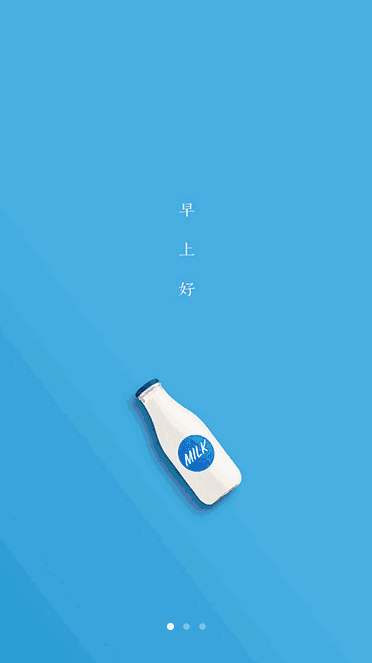iOS App初次启动时的用户引导页制作实例分享
作者:老初
这篇文章主要介绍了iOS App初次启动时的用户引导页制作实例分享,其中判断程序是否是第一次或版本更新以后第一次启动是一个关键点,需要的朋友可以参考下
应用程序APP一般都有引导页,引导页可以作为操作指南指导用户熟悉使用;也可以展现给用户,让用户了解APP的功能作用。引导页制作简单,一般只需要一组图片,再把图片组展现出来就可以了。展示图片组常用UIScrollView来分页显示,并且由UIPageControl页面控制器控制显示当前页。UIScrollView和UIPageControl搭配会更加完美地展现引导页的功能作用。下面我们来看具体的实例:
我们用NSUserDefaults类来判断程序是不是第一次启动或是否更新,在 AppDelegate.swift中加入以下代码:
复制代码
func application(application:
UIApplication, didFinishLaunchingWithOptions launchOptions: [NSObject:
AnyObject]?) -> Bool {
// 得到当前应用的版本号
let infoDictionary =
NSBundle.mainBundle().infoDictionary
let currentAppVersion =
infoDictionary!["CFBundleShortVersionString"] as! String // 取出之前保存的版本号
let userDefaults =
NSUserDefaults.standardUserDefaults()
let appVersion =
userDefaults.stringForKey("appVersion") let storyboard = UIStoryboard(name: "Main", bundle: nil)
// 如果 appVersion 为 nil 说明是第一次启动;如果 appVersion 不等于 currentAppVersion
说明是更新了
if appVersion == nil || appVersion != currentAppVersion
{
// 保存最新的版本号
userDefaults.setValue(currentAppVersion,
forKey: "appVersion") let guideViewController =
storyboard.instantiateViewControllerWithIdentifier("GuideViewController") as!
GuideViewController
self.window?.rootViewController =
guideViewController
} return
true
}在GuideViewController中,我们用UIScrollView来装载我们的引导页:
复制代码
class GuideViewController: UIViewController
{
@IBOutlet weak var pageControl: UIPageControl!
@IBOutlet weak var
startButton: UIButton! private var scrollView: UIScrollView!
private let numOfPages = 3
override func viewDidLoad() {
super.viewDidLoad() let frame = self.view.bounds
scrollView = UIScrollView(frame: frame)
scrollView.pagingEnabled = true
scrollView.showsHorizontalScrollIndicator = false
scrollView.showsVerticalScrollIndicator = false
scrollView.scrollsToTop = false
scrollView.bounces = false
scrollView.contentOffset = CGPointZero
// 将 scrollView 的 contentSize
设为屏幕宽度的3倍(根据实际情况改变)
scrollView.contentSize = CGSize(width:
frame.size.width * CGFloat(numOfPages), height: frame.size.height) scrollView.delegate = self
for index in 0..<numOfPages {
//
这里注意图片的命名
let imageView = UIImageView(image: UIImage(named:
"GuideImage\(index + 1)"))
imageView.frame = CGRect(x:
frame.size.width * CGFloat(index), y: 0, width: frame.size.width, height:
frame.size.height)
scrollView.addSubview(imageView)
} self.view.insertSubview(scrollView, atIndex: 0)
// 给开始按钮设置圆角
startButton.layer.cornerRadius =
15.0
// 隐藏开始按钮
startButton.alpha = 0.0
} // 隐藏状态栏
override func prefersStatusBarHidden() -> Bool
{
return true
}
}最后我们让GuideViewController遵循UIScrollViewDelegate协议,在这里判断是否滑动到最后一张以显示进入按钮:
复制代码
// MARK: -
UIScrollViewDelegate
extension GuideViewController: UIScrollViewDelegate
{
func scrollViewDidScroll(scrollView: UIScrollView) {
let
offset = scrollView.contentOffset
// 随着滑动改变pageControl的状态
pageControl.currentPage = Int(offset.x / view.bounds.width)
// 因为currentPage是从0开始,所以numOfPages减1
if
pageControl.currentPage == numOfPages - 1 {
UIView.animateWithDuration(0.5) {
self.startButton.alpha =
1.0
}
} else {
UIView.animateWithDuration(0.2) {
self.startButton.alpha =
0.0
}
}
}
}在上面的代码中,为了显得自然我们给进入按钮加入了一点动画 :]
最终效果如下:






















